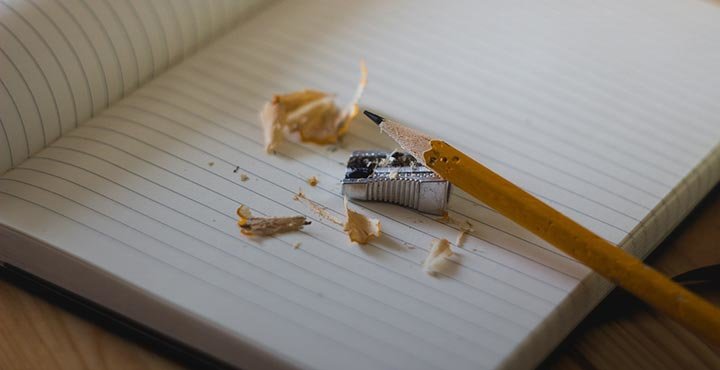Get inside your character's head
A character sketch is a quick rendering of a character, and writing a sketch is about asking and answering questions. In order to write a character sketch, you must ask yourself questions about your character. Only you, as the author, can answer these questions. Although there is no end to the types of questions you can ask, our book editors recommend the following prompts to get you thinking about who your character is so that you can write a clear and concise sketch.
Who is your character physically?
Physical characteristics are the first things we notice when we meet someone. Therefore, this is a good starting point when writing a character sketch. Is your character a woman or a man? Is he or she tall or short? Is your character bald? How old is your character? Does he or she have a disability?
Authors, eager to explore the in-depth psychology of their written subjects, might discount these details as unimportant and base. But it is often these very details that lead to conflict or are the means through which we explore a character's psychology. As an example of this, we recommend reading Flannery O'Connor's Good Country People; in this short story, the physical details of the main character are representations of her internal state. Without a vivid description of this character's physicality, a critical dimension of the plot would be lost and the central conflict would be nonexistent. Answering questions about your character's physicality is the first step in creating a fully realized character.
What is your character doing?
This is the next question to ask because it brings into account other aspects of story writing such as setting and time. The answer to this question will also affect other aspects of your sketch, such as what your character is wearing or how he or she is feeling. Is your character walking down the street? Is he or she sitting in a park? Is your character working on a boat? Asking what your character is doing will not only help you understand your character, but also his or her relationship to the setting in your story.
Authors may be tempted to gloss over this part of characterization. When asked what his or her character is doing, an author might give a cursory answer; he or she may answer that the subject is at the movies, for example. But consider all that there is to do at a movie theatre: Is the character waiting in line for tickets or at the concession stand? Is he or she waiting to talk to the manager? Perhaps the character is sitting impatiently waiting for the movie to begin. Getting as specific as you can when answering this question will not only help you define your character, but will also help to define the other elements of fiction.
What is your character feeling?
This is probably one of the more complex questions you can ask about your character. Is your character angry? Is he or she happy, sad, tired, or depressed? Does your character love something or someone? Asking questions about your character's emotional life might evolve into the production of a character history. While this may be tempting, you have to focus on what your subject is feeling within the context of the story you are writing. Although the answers to these questions are important, they are rarely explicitly stated in the story.
Authors may be tempted to start with the emotional or psychological state of their characters and they may even explicitly state them. This can lead to one of the cardinal sins of fiction writing: telling instead of showing. Implicitly showing how your character is feeling by his or her interactions with other characters or the setting is infinitely more interesting to read than explicitly stating whether your character is happy, sad, elated, joyful, or miserable.
Building off your character sketch
A sketch is a starting point. In the visual arts, artists carry around sketch pads to practice and develop the fundamental skills of their craft with the aim of producing paintings that seem to jump off the canvas, or sculptures that seem to move in just the right light. The same is true for authors who use character sketches. Writers use this tool to develop and rehearse one of the fundamental skills of their craft—characterization. However, the final goal is not to have a notepad full of character sketches. An author should get to know his or her character through this practice.
While not everything that an author writes in a character sketch must be included in the novel, the author should develop an in-depth and all-encompassing knowledge of every facet of the character's personality in order to create a consistent and engaging persona.
The ultimate goal of a writer is to take these character sketches and use them to craft a wonderfully engrossing, character-driven work of fiction. If you want an objective set of eyes to look at your book, try our book critique editors.
Image source: Wilfred Iven/Stocksnap.io











